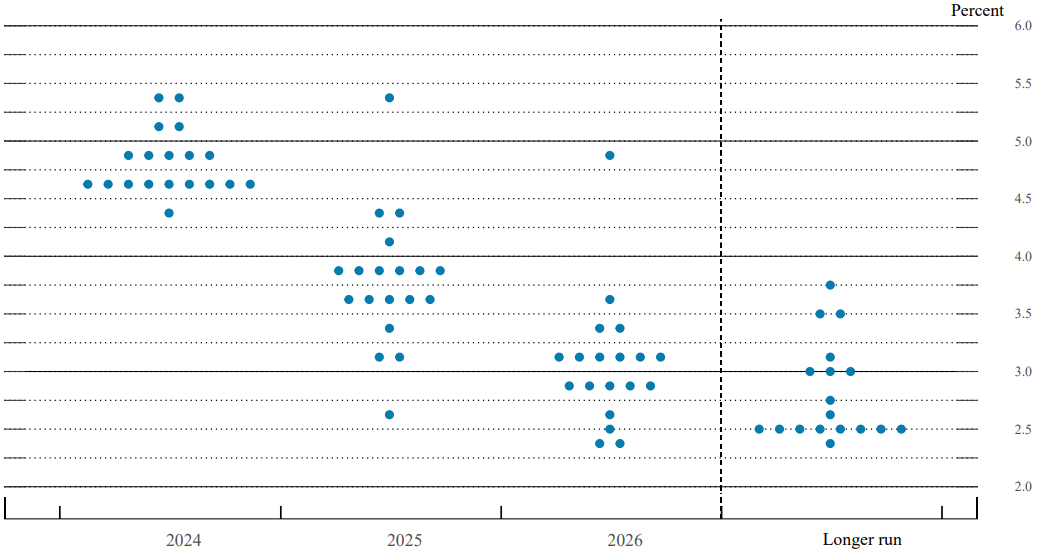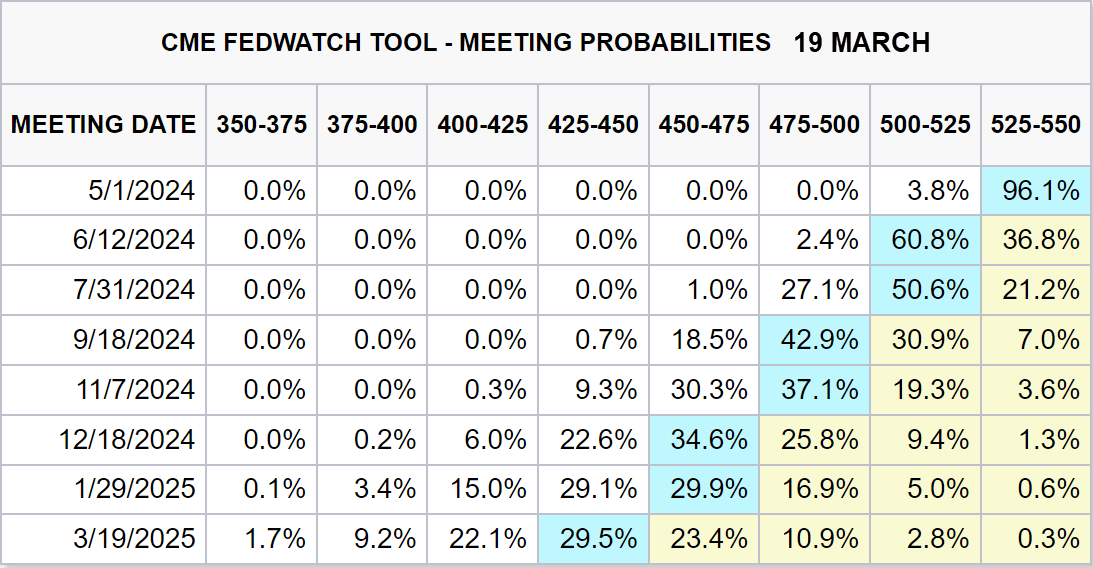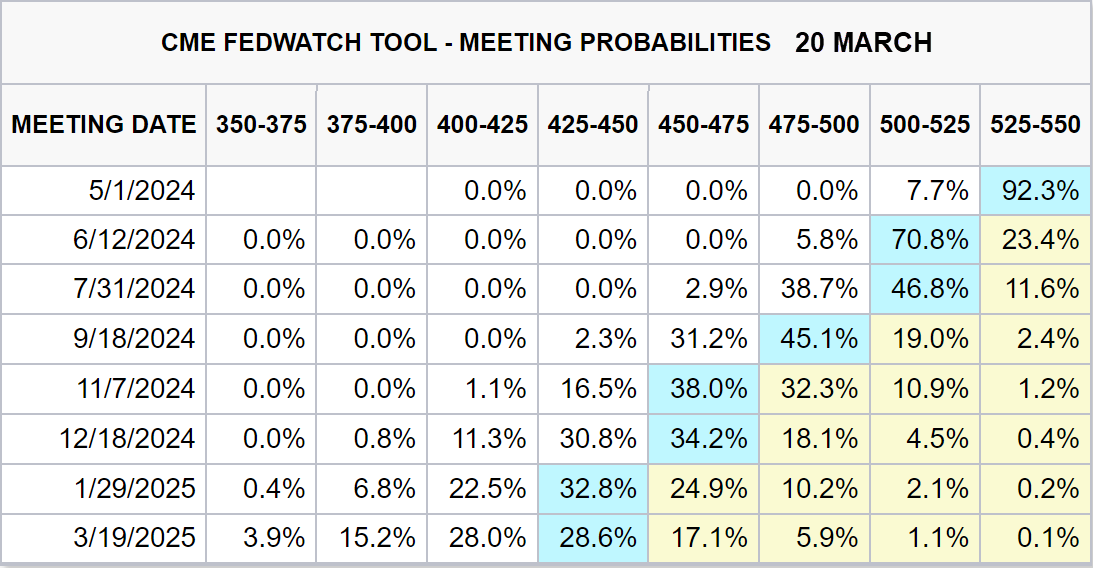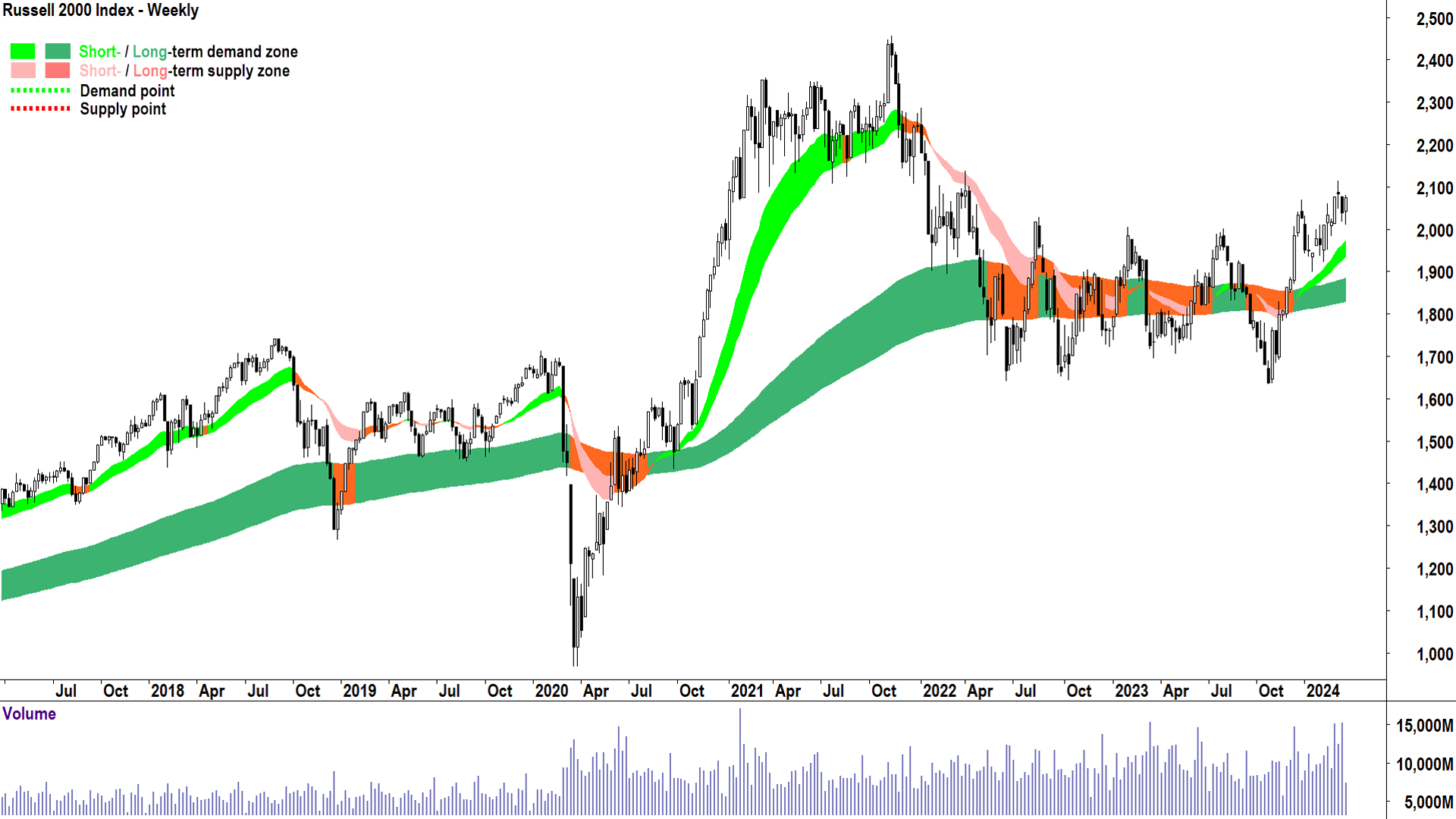Stock market records are tumbling! The low-down on new Fed messaging and where rates are headed in 2024
Records are tumbling Wednesday in the US as markets react to the just-concluded Federal Open Markets Committee (FOMC) meeting. The Dow Jones, the S&P 500, and the Nasdaq each closed at simultaneous record highs for the first time since November 2021.
Other risk assets soared, such as Bitcoin (+9% at the time of writing), gold (which notched a new record high), and growth-related commodities such as high-grade copper.
The end result of the FOMC meeting was no change in the official Fed funds rate, so there’s clearly something markets liked in the Federal Reserve’s messaging and/or Chairman Powell’s post-meeting press conference.
Here’s the lowdown on what happened and what markets are now expecting from the Fed for the rest of 2024.
What the Fed did vs what the Fed said
We know what they did - nothing. The Fed funds rate remains at 5.25%- 5.50%, as it has been since last July.

What they said has significantly more substance and is the trigger for markets perceiving a fresh green light to pile back into risk assets.
What the Fed said No 1
“We believe that our policy rate is likely at its peak for this type of cycle, and that if the economy evolves broadly as expected, it will likely be appropriate to begin dialling back policy restraint at some point this year” - Chairman Powell (emphasis added)
Significance: This is the second time in two weeks Chairman Powell has used the “peak” term, and markets are taking this as a certainty that interest rates won’t go any higher. Markets hate uncertainty, and taking rate hikes off the table is a major plus. Powell also reconfirmed the Fed’s intent to cut this year.
In both cases, stock market analysts will likely amend the discount rates they use to value stocks. The relationship here is clear: lower rates facilitate higher stock valuations, which in turn facilitates higher stock prices.
What the Fed said No 2
Updated 2024 Dot Plot tips three cuts in 2024.

Significance: The Fed’s Dot Plot summarises the federal funds rate expectations for each of the voting members of the FOMC. Markets focus on the median expectation of the dots for each year. The median for 2024 is 4.5%, which implies three 0.25% cuts (i.e., the typical move by the Fed) by the end of the year.
What the Fed said No 3
Updates to economic projections: GDP up, unemployment down, inflation up.
Significance: This is the most bullish aspect of the March meeting and messaging. The Fed expects a sizeable increase in US economic growth, with GDP now expected to be 2.1% in 2024 compared to the previous estimate of 1.4%. Unemployment is expected to be 3.9%, down from the previous estimate of 4.0%, and inflation as measured by the core PCE Index is expected to rise to 2.5%-2.6%, up from the previous estimate of 2.3%-2.4%.
Essentially, the Fed is saying that it is expecting substantially greater economic growth, accompanied by lower unemployment. Despite the expected rise in its inflationary expectations, (from the other items said above), it still predicts three rate cuts this year.
This represents the classic “Goldilocks” scenario, which markets love. Higher growth is great for company earnings, as is lower unemployment, but each clearly will not be hot enough to prevent lower rates, which, coincidentally, markets also love! It’s a win, win, win for markets!
Likely path of US interest rate cuts in 2024
We’ve seen what the Fed thinks. Let’s now look at how markets have interpreted everything said. At the end of the day, it’s market pricing which creates stock prices, not Fedspeak.


The above tables show how market probabilities of the timing of the next three Fed rate cuts have changed since before the March meeting. For the first time, the market is now pricing in a 100% chance of three cuts before the end of the year. This is how the probabilities shifted post- versus pre-meeting:
🔎 1st 0.25% rate cut: June 61% ➡️ 71%
🔎 2nd 0.25% rate cut: July/September/November 107% ➡️ 116%
🔎 3rd 0.25% rate cut: September/November/December 83% ➡️ 103%
How are US stock indices looking post-meeting?
US stocks reacted in a predictably positive way post-meeting, with the Dow, S&P 500, and the Nasdaq rising around 1% each. I mentioned above, each of these indices achieved a simultaneous record high – a feat not seen since November 2021.
Why has it taken since November 2021 for US stocks to do such a thing? Well, it was exactly in November 2021 when Chairman Powell first signalled his intent to end the then-zero interest rate policy, which had been in place since the pandemic broke in early 2020. Rates go up, stocks go down, and vice versa.
More interesting for me in terms of Wednesday’s US index moves, was the broader-based, small capitalisation Russell 2000 Index rose 2%. The Russell 2000 represents the true heart of corporate America, and Wednesday’s move indicates the data from the March Fed meeting will likely provide significant benefits for the broader US economy.
Note that, unlike its larger-cap peers, the Russell 2000 did not close at a record high yesterday. It’s not even close, such has been the damage caused by the fallout of the pandemic and the signalling of lift-off in November 2021.

Still, the above weekly chart is showing strong signs of recovery. The trend ribbons are both back to up, and the price action has returned to rising peaks and rising troughs. Both technical factors signal investors are progressively buying the dip.
The candles since October last year have been predominantly white, a stark contrast to the choppiness that preceded the most recent rally for nearly two years. White candles signal accumulation.
I will leave the discussion of “what could go wrong” to those who care to debate it (not me), and simply leave you with this: If something does go wrong, you’ll see it in the chart in the form of the opposite factors currently in play.
These would be a flattening or turning lower of the trends, a switch to falling peaks and falling troughs, and the appearance of black candles. In conclusion, for now, there’s no reason to believe the Goldilocks scenario can’t play out. Long live the bull market!
This article first appeared on Market Index on Thursday 21 March 2024.
5 topics

